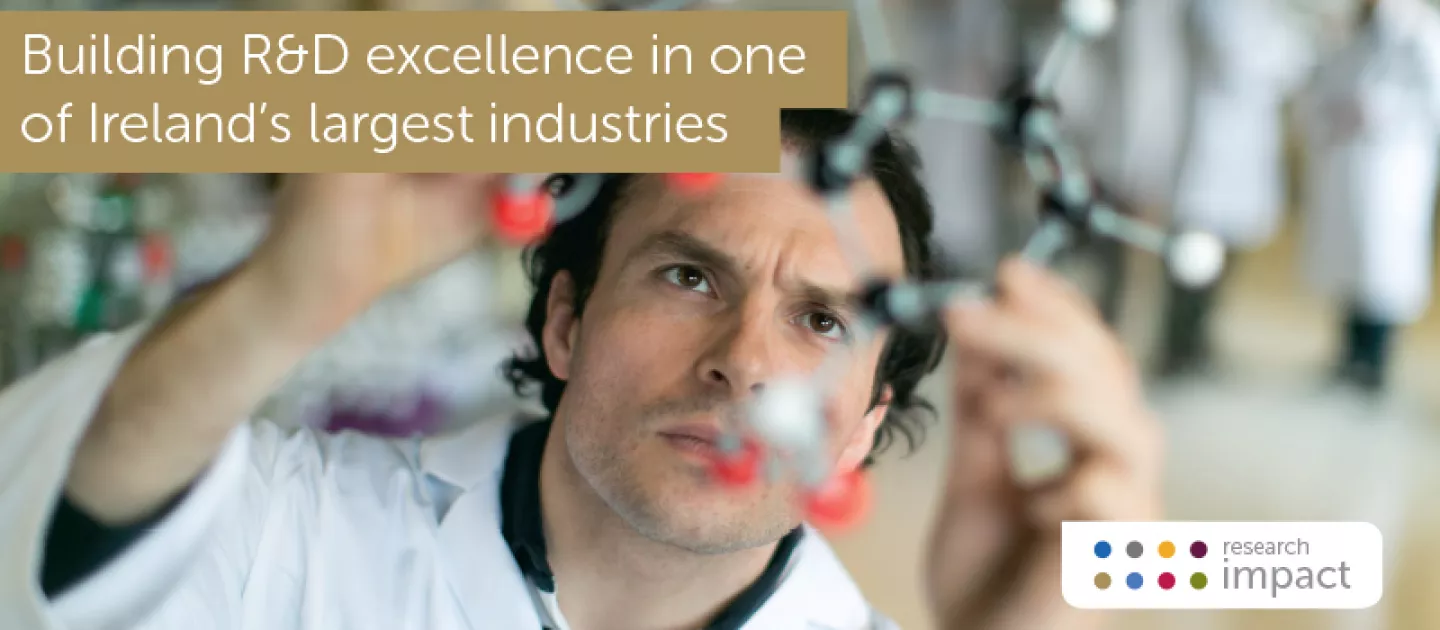Summary of the Impact:
Ireland is the second-largest pharmaceutical exporter in the world. The industry employs over 49,000 and accounts for 50% of all exports. The role this industry plays in the Irish economy cannot be understated and the importance of maintaining competitiveness and excellence in R&D is crucial to its continued success. The Synthesis and Solid State Pharmaceutical Centre (SSPC), funded by Science Foundation Ireland and industry, and hosted at the University of Limerick, is a unique collaboration between 22 industry partners, 9 research performing organisations and 12 international academic collaborators. Jon O’Halloran, SSPC General Manager explains: “The pharmaceutical sector in Ireland is facing several global challenges including the emergence of low-cost economies, the rise of generic medicines and the patent cliff. Traditionally there has been a lack of cohesion between research and the pharmaceutical industry, where confidentiality and competition is paramount. Through SSPC, collaborations have been formed, which ensure that best practice and process knowledge is shared, making the sector more competitive, leading to a concentration of high-value R&D innovation and advanced manufacturing here in Ireland.”
A key theme to the research is its focus on process efficiencies and ‘greener’ chemistry
The SSPC research programme spans the entire pharmaceutical production chain from synthesis of the molecule, to the isolation of the material, and the formulation of the medicine. The overarching objective of the research is to better understand mechanisms, control processes and predict outcomes for the efficient and environmentally sustainable production of safe medicines.
Professor Kieran Hodnett, Scientific Director and Lead Principle Investigator explains: “At the SSPC there are three distinct but interlinking strands of research comprising, environmentally sustainable ways to make active pharmaceutical ingredients, crystal growth and design, and drug formulation and manufacture. A key theme to the research is its focus on process efficiencies and ‘greener’ chemistry, which will have a positive impact on the environment by reducing, and in some cases eliminating, the use of environmentally hazardous materials.”
The SSPC supports 43 research performing organisations and industry partners, 30 Principal Investigators, 30 Postdoctoral Researchers, 60 PhD Candidates and 19 funded projects. The SSPC has received over €60 million in funding since its establishment, primarily through Science Foundation Ireland (SFI) and industry.
Sustainable Development Goals
References to the research
In situ monitoring of supersaturation and polymorphic form of piracetam during batch cooling crystallization
Solution Mediated Phase Transformations between Co-crystals
Investigation into the Mechanism of SolutionMediated Transformation from FI to FIII Carbamazepine: The Role of Dissolution and the Interaction between Polymorph
Surfaces
Surfaces
